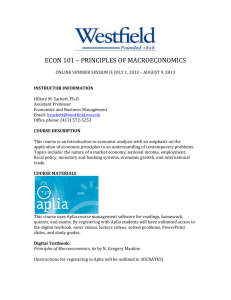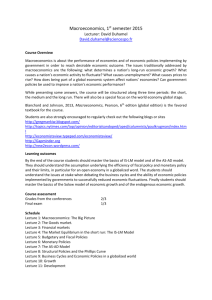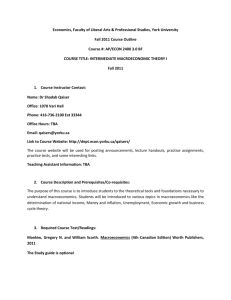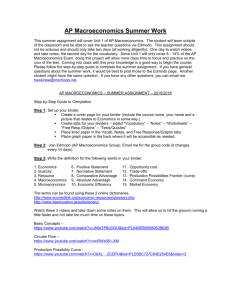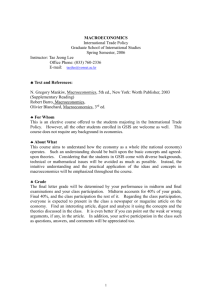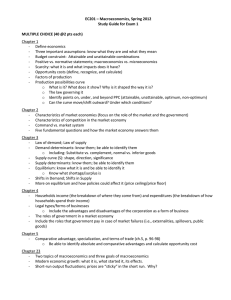Team-Based Exams and Projects
advertisement
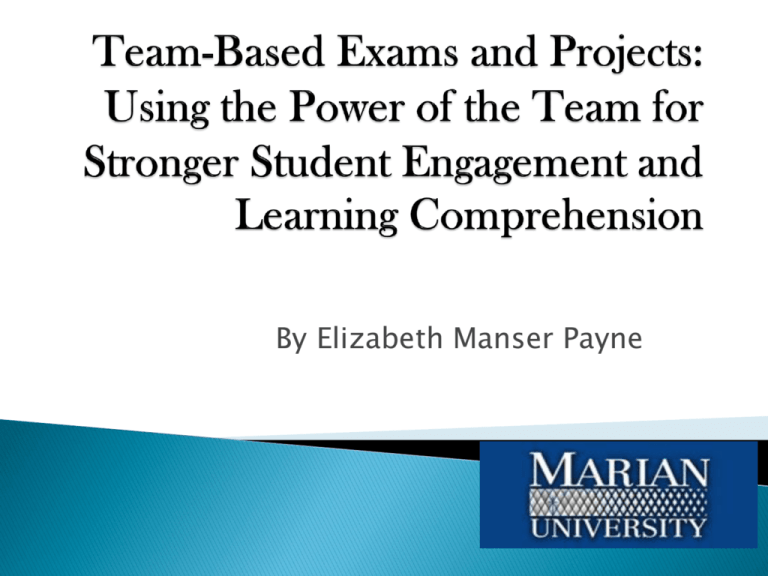
By Elizabeth Manser Payne 1. 2. 3. 4. Demonstrate methods to engage students with team-based projects and exams. How to establish Ground Rules for teambased activities Discussion on the Pros & Cons Data results for Exams Marian University: ∙ Coeducational, Catholic university providing a values-based applied liberal arts education. ∙ Core values are Community, Learning, Service, Social Justice, and Spiritual Traditions. ∙ Enrollment of more than 3,000 students includes 1,200 traditional day students. Marian also offers adult accelerated evening/weekend undergraduate programs. ECO 201 Macroeconomics Course Typical class enrollment: 20 students Freshmen: 10% Sophomores: 50% Juniors: 35% Seniors: 5% Course Objectives/Assessment Be introduced to the key concepts of macroeconomics such as scarcity, opportunity costs, supply, demand, trade, GDP, the cost of living, and the monetary system. (knowledge acquisition) Examine the field of macroeconomics in the role of scientists and policy makers (knowledge acquisition, effective communication & critical thinking) Examine the U.S. economy in comparison to other economies from across the globe. (global perspectives, critical thinking) Participation Exams Homework Project So– What does it look like??? How do we do that?? Marian University business programs are: Applied. Business programs are oriented to real world issues and problems confronting business. They integrate theoretical knowledge with application. Faculty members have real world experience in addition to academic credentials. Hands-on. They provide numerous experiences building skills needed in the real world using a variety of methods both within the classroom and in internship experiences. Socially responsible & ethical. The philosophy of behaving in a socially responsible and ethical manner in business is emphasized throughout the curriculum. School of Business and Public Safety Annual Report for 2011-12 Students will be expected to demonstrate competency in the course learning objectives: ECO 201: Course Objectives The student will: • Be introduced to the key concepts of macroeconomics such as scarcity, opportunity costs, supply, demand, trade, GDP, the cost of living, and the monetary system. • Examine the field of macroeconomics in the role of scientists and policy makers • Examine the U.S. economy in comparison to other economies from across the globe. course syllabus Students are empowered to apply what they know about macroeconomics in a Real World Setting ◦ In the Real World, employees work together to find solutions ◦ No Deadwood Textbook Country (concepts & theories) Project/Review Sheet (research) Exam Article (application) ◦Russia Economy: The S Word The Economist, November 9, 2013 No Deadwood– Each student needs to bring ideas to the table Individual Work (15 minutes) Individual work (ideas for the team) is highlighted Team Work (up to 30 minutes) Individual Essay Writing (up to 75 minutes) Developing What down what works to do when things break Pros: ◦ Synergy ◦ Builds Confidence ◦ Real World employs Team-based Solutions Cons: ◦ Deadwood ◦ Need extra space & an additional proctor ◦ Separating individual from group performance Fall 2013 Averages ◦ ◦ ◦ ◦ Final Exam: 85% Midterm:74% Team Project: 87% Aplia Problem Sets:85% Spring 2014 Averages ◦ ◦ ◦ ◦ Final Exam: 82% Midterms: 85% Team Project:85% Aplia Problem Sets:82% Strong students– very little impact on final exam grades. Strong students perform strongly on all assessments. Weak students– very small positive impact on grade. Weaker students do not perform significantly higher on Final Exam (Team-based) Average Students– small to moderate positive impact on grade. These students seem to have the most positive impact on final exam grades. Elizabeth Manser Payne Marian University 45 S. National Ave. Fond du Lac, WI 54935 920-923-8731 ehmanserpayne68@marianuniversity.edu



